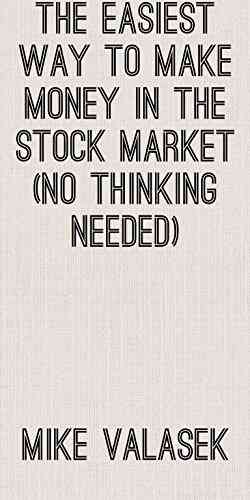How The Percent Provides The Standard Of Living Of The 99 Percent


In today's world, where wealth inequality is a pressing issue, it is important to understand how the percent plays a crucial role in providing the standard of living for the 99 percent. The financial, social, and economic systems are interconnected in such a way that the actions of the top percent can significantly impact the lives of the majority. This article will explore the various dynamics that contribute to this phenomenon, shedding light on both the positive and negative aspects.
The Role of the Top Percent in Economic Growth
One of the key ways the top percent provides the standard of living for the 99 percent is through their contribution to economic growth. This small but influential group often consists of entrepreneurs, business owners, and investors who drive innovation and create job opportunities. Their investments fuel economic expansion, leading to increased employment rates and higher wages for the majority of the population.
Additionally, the top percent's spending power plays a crucial role in stimulating consumer demand. Their luxury purchases, investments, and philanthropic activities create a ripple effect throughout the economy, benefitting various sectors and industries. This, in turn, results in job creation, wage growth, and overall improvement in the standard of living.
4.4 out of 5
| Language | : | English |
| File size | : | 433 KB |
| Text-to-Speech | : | Enabled |
| Screen Reader | : | Supported |
| Enhanced typesetting | : | Enabled |
| Word Wise | : | Enabled |
| Print length | : | 14 pages |
| Lending | : | Enabled |
The Impact of Wealth Redistribution
While the top percent's contributions to economic growth are undeniable, wealth redistribution also plays a significant role in ensuring the standard of living for the 99 percent. Governments implement policies and tax systems aimed at reducing income disparities and providing social welfare programs to support the less fortunate. For instance, progressive taxation ensures that those with higher incomes contribute a larger percentage of their earnings towards public services and wealth redistribution efforts.
Through taxation, revenue is generated to fund public education, healthcare systems, infrastructure development, and social safety nets, all of which directly impact the quality of life for the majority. This redistribution mechanism aims to bridge the gap between the wealthy and the less privileged, ensuring access to basic needs and creating a more equitable society.
Corporate Social Responsibility and Philanthropy
Corporate social responsibility (CSR) and philanthropy have gained significant attention in recent years. Many top companies and individuals belonging to the top percent actively participate in charitable activities, investing in social programs and initiatives that benefit the 99 percent. These initiatives can include educational scholarships, healthcare programs, environmental conservation efforts, and community development projects.
Such initiatives not only contribute to the standard of living but also foster community development and address social issues. By allocating resources towards philanthropy, the top percent helps bridge the gap between the haves and have-nots, working towards a more inclusive society where everyone has access to essential resources and opportunities.
The Influence of Public Policies and Regulation
The standard of living for the 99 percent heavily relies on the formulation and implementation of public policies and regulations. Governments play a crucial role in safeguarding the interests of the majority, implementing laws that protect workers' rights, ensure fair wages, and create a supportive environment for businesses to thrive.
Effective regulation helps prevent exploitation, encourages fair competition, and ensures the equitable distribution of resources. The top percent's influence in shaping public policies can impact various aspects of the economy and society, including income distribution, labor laws, healthcare accessibility, and environmental regulations.
The Challenges and Criticisms
While the role of the top percent in providing the standard of living for the 99 percent is crucial, it is not without its challenges and criticisms. Critics argue that the concentration of wealth and power in the hands of a few can lead to corruption, influence over policymakers, and disregard for the needs of the majority.
Furthermore, wealth inequality can create social unrest and divisions within society, contributing to a lack of social cohesion. To address these issues, it is essential to ensure transparency, accountability, and inclusivity in decision-making processes to safeguard the interests of the majority.
The interplay between the top percent and the 99 percent is complex, with various factors influencing the standard of living of the majority. While the entrepreneurial spirit and economic contributions of the top percent play a significant role in driving growth and providing opportunities, wealth redistribution, philanthropy, public policies, and regulation are vital in ensuring an equitable society.
As societies grapple with wealth inequality, it is crucial to foster a dialogue that encourages collaboration and collective action. By recognizing the contributions and responsibilities of the top percent, while also addressing the challenges and criticisms, we can strive towards a more inclusive and prosperous future for all.
4.4 out of 5
| Language | : | English |
| File size | : | 433 KB |
| Text-to-Speech | : | Enabled |
| Screen Reader | : | Supported |
| Enhanced typesetting | : | Enabled |
| Word Wise | : | Enabled |
| Print length | : | 14 pages |
| Lending | : | Enabled |
The overwhelming majority of our contemporaries, ranging from the illiterate to the highly educated, are utterly ignorant of the role of privately owned means of production—capital—in the economic system. As they see matters, wealth in the form of means of production and wealth in the form of consumers’ goods are essentially indistinguishable. For all practical purposes, they have no awareness of the existence of capital and of its importance. Thus, capitalists are generally depicted as fat men, whose girth allegedly signifies an excessive consumption of food and of wealth in general, while their alleged victims, the wage earners, are typically depicted as substantially underweight, allegedly signifying their inability to consume, thanks to the allegedly starvation wages paid by the capitalists.
The truth is that in a capitalist economic system, the wealth of the capitalists is not only overwhelmingly in the form of means of production, such as factory buildings, machinery, farms, mines, stores, warehouses, and means of transportation and communication, but all of this wealth is employed in producing for the market, where its benefit is made available to everyone in the economic system who is able to afford to buy its products.
Consider. Whoever can afford to buy an automobile benefits from the existence of the automobile factory and its equipment where that car was made. He also benefits from the existence of all the other automobile factories, whose existence and competition served to reduce the price he had to pay for his automobile. He benefits from the existence of the steel mill that provided the steel for his car, and from the iron mine that provided the iron ore needed for the production of that steel, and, of course, from the existence of all the other steel mills and iron mines whose existence and competition served to hold down the prices of the steel and iron ore that contributed to the production of his car.
And, thanks to the great magnitude of wealth employed as capital, the demand for labor, of which capital is the foundation, is great enough and thus wages are high enough that virtually everyone is able to afford to a substantial degree most of the products of the economic system. For the capital of the capitalists is the foundation both of the supply of products that everyone buys and of the demand for the labor that all wage earners sell. More capital—a greater amount of wealth in the possession of the capitalists—means a both a larger and better supply of products for wage earners to buy and a greater demand for the labor that wage earners sell. Everyone, wage earners and capitalists alike, benefits from the wealth of the capitalists, because, as I say, that wealth is the foundation of the supply of the products that everyone buys and of the demand for the labor that all wage earners sell. More capital in the hands of the capitalists always means a more abundant, better quality of goods and services offered for sale and a larger demand for labor. The further effect is lower prices and higher wages, and thus a higher standard of living for wage earners.
Furthermore, the combination of the profit motive and competition operates continually to improve the products offered in the market and the efficiency with which they are produced, thus steadily further improving the standard of living of everyone.
In the alleged conflict between the so-called 99 percent and the so-called 1 percent, the program of the 99 percent is to seize as far as possible the wealth of the 1 percent and consume it. To the extent that it is enacted, the effect of this program can only be to impoverish everyone, and the 99 percent to a far greater extent than the 1 percent. To the extent that the 1 percent loses its mansions, luxury cars, and champagne and caviar, 99 times as many people lose their houses, run-of-the mill cars, and steak and hamburger.
Do you want to contribute by writing guest posts on this blog?
Please contact us and send us a resume of previous articles that you have written.




















Light bulbAdvertise smarter! Our strategic ad space ensures maximum exposure. Reserve your spot today!

 Rodney ParkerUncovering the Dark Secrets of Morbius 2019: Vita Ayala Crafts a Hauntingly...
Rodney ParkerUncovering the Dark Secrets of Morbius 2019: Vita Ayala Crafts a Hauntingly... Seth HayesFollow ·3.4k
Seth HayesFollow ·3.4k Hudson HayesFollow ·8.3k
Hudson HayesFollow ·8.3k George R.R. MartinFollow ·3.2k
George R.R. MartinFollow ·3.2k Douglas AdamsFollow ·8.7k
Douglas AdamsFollow ·8.7k Clinton ReedFollow ·17.7k
Clinton ReedFollow ·17.7k Don ColemanFollow ·3k
Don ColemanFollow ·3k Cason CoxFollow ·14.7k
Cason CoxFollow ·14.7k Brady MitchellFollow ·14.5k
Brady MitchellFollow ·14.5k

 Galen Powell
Galen PowellBillionaire Forbidden Romance: Opposites Attract - The...
When it comes to romance, the age-old saying...

 Fletcher Mitchell
Fletcher MitchellThe Midnight Library: A Journey of Self-Discovery and...
Are you seeking an escape from...

 Emilio Cox
Emilio CoxRiad Dubois: The Complete Romance
Imagine a place where time...

 Francisco Cox
Francisco CoxThe Unforgettable Journey through the Enchanting Empire...
Imagine a world where magic dances in the...

 Edmund Hayes
Edmund HayesThe Girl With All The Gifts - A Captivating Tale of...
In the realm of...

 Julio Ramón Ribeyro
Julio Ramón RibeyroHow To House Train Your Dog - The Ultimate Guide
Bringing a new dog into your...

 Allen Parker
Allen ParkerTo Kill Our Worthy Comrade The Lidiya Petrova Papers
On a cold winter night in the heart of Moscow,...

 Terry Pratchett
Terry PratchettUnraveling the Secrets and Power Play: Largo Winch Volume...
Are you ready to embark on another...

 Devin Cox
Devin CoxThe Easiest Way To Make Money In The Stock Market No...
Are you tired of spending countless...

 Walter Simmons
Walter SimmonsFestive Short Mystery Coffee Break Cozies
Looking for a delightful,...

 Ruben Cox
Ruben CoxFlorida Roadkill: Unveiling the Adventures of Serge...
Have you ever wondered what it would be like...

 Esteban Cox
Esteban CoxThe Scandalous Life of Cora Pearl: The Grand Courtesan...
When it comes to the intriguing world of...
4.4 out of 5
| Language | : | English |
| File size | : | 433 KB |
| Text-to-Speech | : | Enabled |
| Screen Reader | : | Supported |
| Enhanced typesetting | : | Enabled |
| Word Wise | : | Enabled |
| Print length | : | 14 pages |
| Lending | : | Enabled |


















